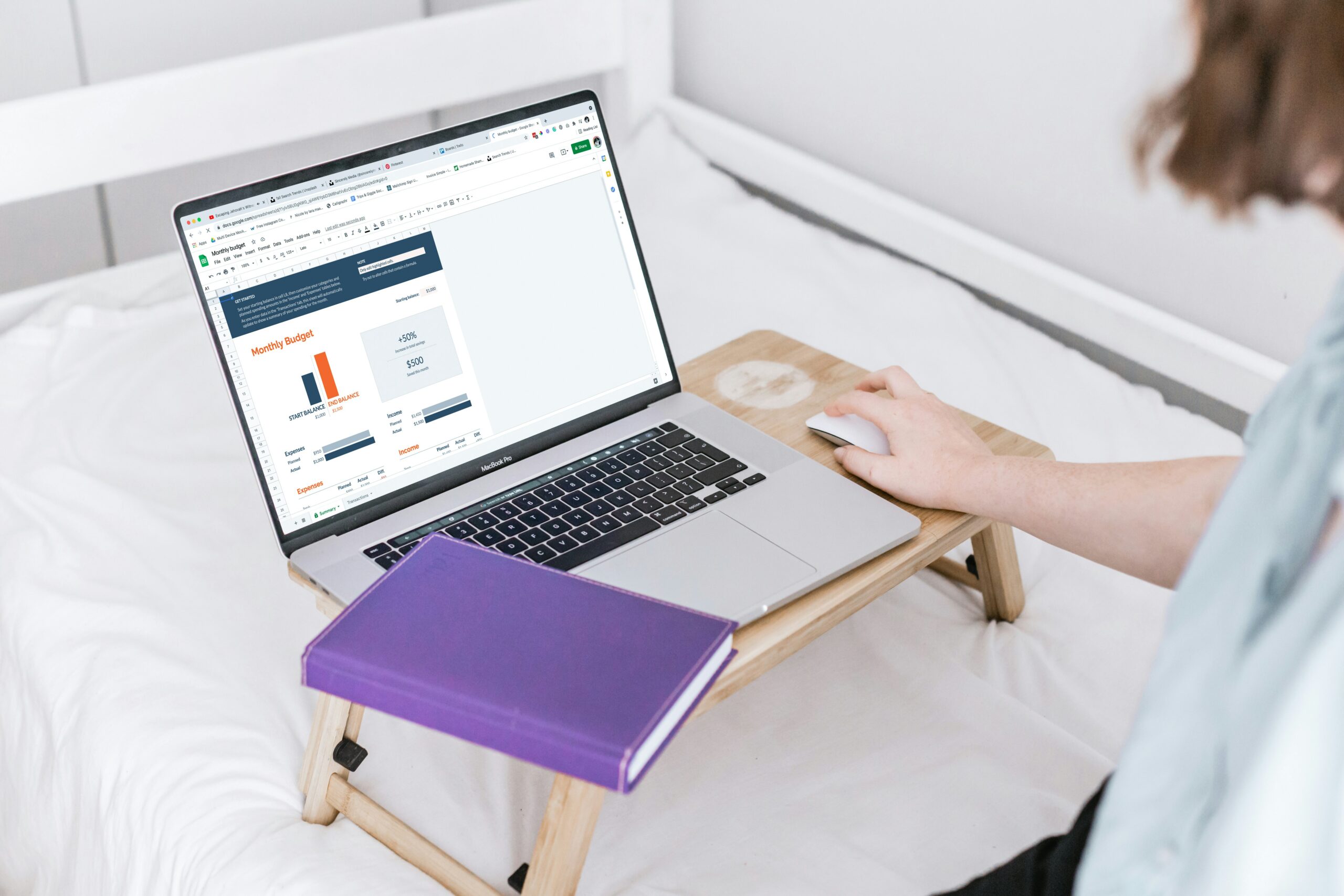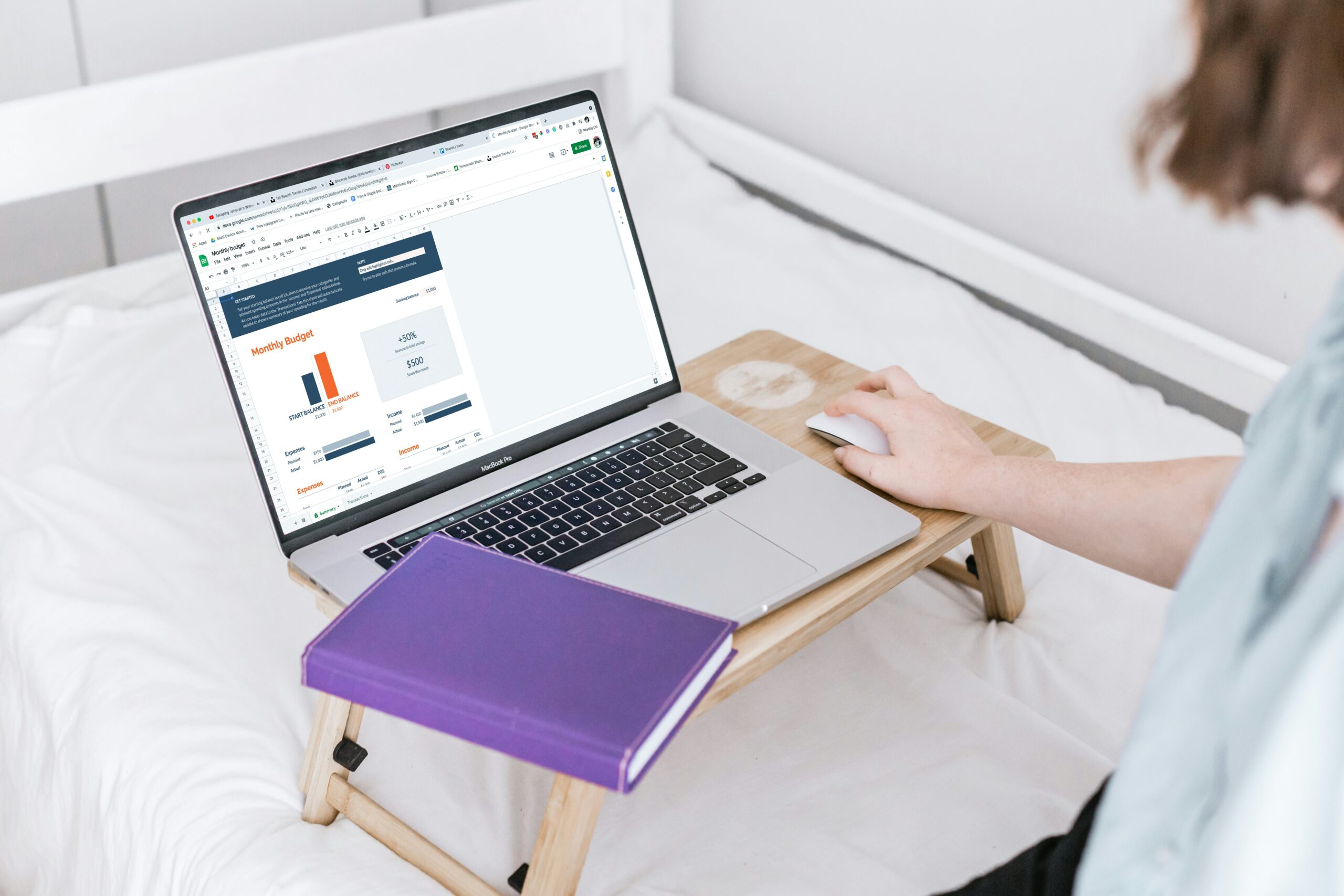Your cart is currently empty!

Mastering the Art of Managing Impulse Purchases: A Comprehensive Guide
Understanding Impulse Purchases
Impulse purchases are unplanned decisions to buy a product or service, made just before the purchase. These spur-of-the-moment transactions are often driven by emotional responses rather than rational decision-making. Psychological triggers play a significant role in prompting these spontaneous buying behaviors. For instance, emotional responses such as excitement, stress, or even boredom can lead individuals to make purchases they had not intended. Retail therapy, where shopping is used as a means to improve one’s mood, is a common manifestation of this phenomenon.
Environmental factors also substantially influence impulse buying. The strategic placement of products, enticing displays, and the overall ambiance of a store can create an atmosphere that encourages consumers to make impulsive purchases. Supermarkets often place high-margin items near the checkout area to capitalize on this behavior. Additionally, online shopping environments leverage algorithms to suggest complementary products, thereby increasing the likelihood of an unplanned purchase.
Marketing tactics are meticulously designed to trigger impulsive buying. Techniques such as limited-time offers, flash sales, and buy-one-get-one-free deals create a sense of urgency and scarcity, nudging consumers towards quick decisions. The use of persuasive language, attractive packaging, and celebrity endorsements also play crucial roles in influencing consumer behavior. Understanding these marketing strategies can help individuals recognize when they are being subtly manipulated into making purchases they do not need.
Being aware of the triggers that lead to impulsive buying is crucial for maintaining financial well-being. Impulse purchases, although often small individually, can accumulate and have a significant impact on one’s budget over time. By recognizing the psychological and environmental factors at play, individuals can develop strategies to mitigate impulsive spending, such as setting a budget, making shopping lists, and practicing mindfulness. Awareness and proactive management of impulsive buying behaviors are essential steps towards achieving long-term financial stability.
The Consequences of Impulse Buying
Impulse buying can have far-reaching consequences, impacting both personal finances and overall well-being. One of the most immediate effects is financial stress. When purchases are made on a whim, they often exceed the planned budget, leading to unanticipated expenses. This financial strain can build up over time, especially if impulse buying becomes a habitual behavior. It may result in a depleted savings account or the inability to cover essential expenses, creating a cycle of financial instability.
Increased debt is another significant consequence of impulse purchases. Credit cards make it easy to buy now and pay later, but this convenience can quickly snowball into mounting debt. The interest rates on credit card balances can exacerbate the situation, making it challenging to pay off the principal amount. Over time, this can lead to a reduced credit score, affecting one’s ability to secure loans or mortgages in the future.
Beyond financial implications, impulse buying can also lead to emotional regret and stress. The initial thrill of making a spontaneous purchase often fades, leaving behind a sense of guilt or buyer’s remorse. This emotional toll can affect one’s mental health, contributing to feelings of anxiety and dissatisfaction. Personal anecdotes often illustrate this well; for example, an individual may share how they bought an expensive gadget on impulse, only to find it gathering dust shortly after, while they struggled to pay their bills.
Case studies further underscore these consequences. Consider the story of Jane, who frequently indulged in online shopping sprees. Over time, her credit card debt accumulated to the point where she could no longer make minimum payments. The financial stress affected her sleep and overall happiness, leading her to seek professional financial counseling. Her experience highlights the importance of mindful spending and the potential pitfalls of unchecked impulse buying.
Understanding the negative impacts of impulse purchases is crucial for fostering responsible spending habits. By recognizing the financial and emotional consequences, individuals can make more informed decisions, ultimately leading to better financial health and overall well-being.
Understanding the nuances of managing impulse purchases begins with identifying the triggers that lead to such expenditures. Recognizing these factors can significantly aid in curbing unnecessary spending. One effective method is maintaining a purchase diary. By recording every purchase, particularly noting the context and emotions surrounding each transaction, individuals can start to see patterns in their spending behavior.
Common triggers for impulse purchases often include emotional states such as stress and boredom. For instance, many people find themselves making unplanned purchases as a form of stress relief. This type of emotional spending can provide a temporary sense of satisfaction but often leads to buyer’s remorse. Similarly, boredom can drive individuals to shop as a means of filling time or adding excitement to their routine.
Social pressure is another potent trigger. The influence of friends, family, or even social media can prompt impulse buys. When others around us are spending or showcasing their latest purchases, there can be a compelling urge to keep up, leading to unplanned expenditures. Recognizing this pattern can be the first step in mitigating its impact.
To better understand these triggers, keeping a detailed purchase diary can be immensely helpful. This diary should include information about what was purchased, the time of day, the location, the emotional state at the time, and any external influences or pressures. Over time, this record will reveal specific trends and triggers unique to the individual. By analyzing these entries, one can identify recurring themes and situations that lead to impulse buys.
Armed with this knowledge, strategies can be developed to manage these triggers. For instance, if stress is a primary trigger, finding alternative stress-relief methods such as exercise or meditation could be beneficial. Similarly, if boredom is a trigger, engaging in hobbies or activities that provide fulfillment without financial expenditure can help. Recognizing and understanding these triggers is a crucial step towards mastering the art of managing impulse purchases.
Strategies to Curb Impulse Buying
Effectively managing impulse purchases requires a combination of practical strategies and a strong sense of self-discipline. One of the most fundamental approaches is creating a detailed budget. By outlining your monthly income and expenses, you can allocate funds for essential needs and discretionary spending, making it easier to identify and limit unnecessary purchases. A well-structured budget serves as a financial roadmap, helping you stay on track with your financial goals.
Additionally, making shopping lists is a powerful tool for curbing impulse buying. Before heading to the store or browsing online, compile a list of items you genuinely need. This not only keeps your shopping focused but also reduces the temptation to purchase unplanned items. Sticking to your list can help you avoid the pitfalls of impulsive buying, ensuring that your expenditures align with your budget.
Setting clear financial goals is another effective strategy. Whether it’s saving for a major purchase, building an emergency fund, or investing for the future, having specific objectives can motivate you to think twice before making impulsive purchases. When you’re tempted to buy something on a whim, remind yourself of your long-term goals and how the money could be better spent or saved.
Implementing a waiting period before making a purchase is also beneficial. For non-essential items, consider adopting a 24-hour or even a 30-day rule. This waiting period allows you to evaluate whether the purchase is necessary or if it’s merely an impulse. Often, the desire to buy something diminishes after some time, leading to more rational decision-making.
Finally, the importance of self-discipline and mindfulness cannot be overstated. Being mindful of your shopping habits involves recognizing triggers that lead to impulsive buying, such as emotional states or environmental cues, and consciously making an effort to resist them. Practicing self-discipline, through techniques like mindful breathing or setting personal boundaries, can significantly reduce impulse purchases and lead to healthier financial habits.
The Role of Technology in Impulse Control
Technology plays a dual role in the sphere of impulse buying, acting both as a catalyst and as a potential solution. On one hand, the convenience of online shopping and the precision of targeted advertising have significantly contributed to an increase in impulsive spending. The ease with which consumers can make purchases with just a few clicks, coupled with personalized ads that cater to individual preferences, creates an environment ripe for impulse buying. These targeted advertisements leverage data analytics to present products that a consumer is likely to purchase on a whim, often leading to unplanned expenditures.
On the other hand, technology also offers tools that can help manage and mitigate impulsive spending. Various apps and financial management tools are designed specifically to help individuals gain control over their spending habits. These applications can track expenses, set spending limits, and provide reminders or alerts when one is about to make a purchase. For example, apps like Mint and YNAB (You Need a Budget) offer comprehensive budgeting tools that allow users to monitor their financial activities in real time. These platforms can categorize expenditures, highlight areas where overspending occurs, and suggest adjustments to stay within budget.
Additionally, browser extensions and mobile applications such as Honey and Rakuten offer features that encourage more mindful spending. Honey, for instance, finds and applies discount codes automatically, which can lead to cost savings and reduce the temptation to make impulsive purchases at full price. Similarly, Rakuten offers cashback on purchases, incentivizing users to consider their buying decisions more carefully.
Incorporating these technological tools into daily financial habits can significantly aid in managing impulse purchases. By providing real-time data and actionable insights, these tools empower consumers to make more informed decisions, thereby reducing the likelihood of succumbing to impulsive buying tendencies. Hence, while technology can indeed exacerbate impulse spending, it also holds the key to fostering better financial discipline and control.
Building Healthy Shopping Habits
Developing healthy shopping habits is instrumental in managing impulse purchases and aligning with long-term financial goals. One effective approach is practicing mindful shopping. This involves taking a step back before making a purchase to evaluate whether it is a necessity or simply a want. Asking questions such as, “Do I really need this?” or “Will this add value to my life?” can help discern between essential items and impulsive desires.
Prioritizing needs over wants is another crucial strategy. Creating a well-defined shopping list that focuses on essentials can prevent unnecessary expenditures. This list acts as a roadmap, ensuring that purchases are intentional and aligned with your financial objectives. Moreover, sticking to a budget helps reinforce these priorities and limits the temptation to splurge on non-essential items.
Emotional triggers often play a significant role in impulsive buying. Finding alternative ways to cope with emotions such as stress, boredom, or sadness can mitigate this behavior. Activities like exercising, meditating, or engaging in a hobby can provide a healthy outlet for emotions without the financial repercussions. By addressing the root cause of emotional spending, you can cultivate more sustainable shopping habits.
The benefits of adopting these practices extend beyond immediate financial savings. Over time, healthier shopping habits contribute to enhanced financial stability and reduced debt. This, in turn, fosters a sense of personal satisfaction and financial security. When spending aligns with one’s values and goals, it creates a more fulfilling and balanced lifestyle.
Incorporating mindful shopping, prioritizing needs, and finding emotional alternatives to spending are integral steps in building healthy shopping habits. These practices not only curb impulsive purchases but also pave the way for long-term financial well-being and personal contentment. By consistently applying these strategies, individuals can achieve greater control over their finances and lead a more intentional and satisfying life.
Seeking Professional Help
There are instances when managing impulse purchases independently may become increasingly challenging, necessitating the intervention of professionals. Recognizing the need for expert assistance is a crucial step towards regaining control over impulsive buying tendencies. Several professionals are equipped to provide the necessary guidance and support, including financial advisors, therapists, and support groups.
Financial advisors specialize in helping individuals create and adhere to budgets, offering tailored strategies to curb unnecessary expenditures. By analyzing spending patterns and financial goals, they can develop a personalized plan to manage finances more effectively. When looking for a reputable financial advisor, consider their certifications, experience, and client reviews. A certified financial planner (CFP) designation is often a good indicator of credibility.
Therapists, particularly those who specialize in cognitive-behavioral therapy (CBT), can address the underlying psychological triggers that lead to impulse buying. CBT techniques are designed to modify negative thought patterns and behaviors, making it easier to resist the urge to make impulsive purchases. When searching for a therapist, ensure they have experience dealing with compulsive behaviors and are licensed to practice in your state. Initial consultations can help determine if their approach aligns with your needs.
Support groups provide a community-based approach to managing impulse purchases. These groups, often facilitated by professionals or peers, offer a platform to share experiences and strategies with others facing similar challenges. Organizations such as Debtors Anonymous provide support networks and resources for those struggling with compulsive spending. Engaging in these groups can foster a sense of accountability and provide emotional support.
When seeking professional help, it is important to set realistic expectations. Professional intervention can provide valuable tools and support, but the commitment to change must come from within. Regular follow-ups and active participation in recommended activities are essential to achieving long-term success in managing impulse purchases.
Success Stories: Overcoming Impulse Buying
Impulse buying is a challenge many individuals struggle with, but numerous success stories demonstrate that it is possible to overcome it with dedication and strategic approaches. These narratives not only offer motivation but also practical insights into effective financial management.
Consider the story of Jane, a young professional who found herself frequently purchasing items on a whim, leading to constant financial stress. Jane decided to take control of her finances by implementing a budget and sticking to it. She began by tracking her expenses and identifying triggers for her impulsive purchases. Through this process, Jane discovered that emotional triggers, such as stress or boredom, were significant contributors. To counteract this, she started practicing mindfulness techniques and engaging in alternative activities like reading and exercising. Over time, Jane saw a significant reduction in her impulse purchases and enjoyed a more balanced financial life.
Another inspiring tale is that of Mark, a college student who struggled with online shopping. Mark’s turning point came when he realized his impulsive spending was affecting his ability to save for future goals. He adopted a minimalist approach by decluttering his living space and only keeping essentials. Additionally, Mark installed apps that tracked his spending and set limits on non-essential purchases. By setting clear financial goals and consciously reflecting on his long-term aspirations, Mark was able to curb his impulse buying habits. The result was a substantial increase in his savings, allowing him to invest in his education and future career.
Lastly, we have Sarah, a retiree who found herself making frequent impulse purchases out of habit. Sarah sought the help of a financial advisor who introduced her to the concept of delayed gratification. She began implementing a 30-day rule, where she would wait for a month before making any non-essential purchases. This practice not only reduced her impulse buys but also helped her appreciate the value of money. Sarah’s newfound financial discipline allowed her to enjoy a comfortable and stress-free retirement.
These stories highlight that overcoming impulse buying is achievable with the right strategies and mindset. By understanding personal triggers, setting clear goals, and seeking professional guidance when necessary, individuals can transform their financial habits and achieve long-term stability.
Recent Posts
- Mastering Budgeting with Irregular Income: A Comprehensive Guide

- How to Deal with Budget Busters: A Comprehensive Guide

- Mastering the Art of Managing Impulse Purchases: A Comprehensive Guide

- Mastering Your Finances with the 50/30/20 Budgeting Rule

- Budgeting for Clothing: A Comprehensive Guide to Smart Shopping

Categories
Archive
Tags
budget-friendly transportation budgeting Budgeting Tips Clothing Budgeting cost-saving tips Digital Finance Dining Out eco-friendly commuting economics Economic Trends Emergency Fund entertainment expenses ESG Investing financial crisis Financial Independence Financial Management Financial Planning Fintech flexible jobs freelance work Future of Work gig economy Grocery Budgeting higher education Impact Investing Impulse Buying inflation Interest Rates Investing Basics Investment Strategies Irregular Income Market Volatility Meal Planning money management Personal Finance Remote Work Retirement Planning Risk Management Shopping Habits Smart Shopping student loans Sustainable Finance Sustainable Lifestyle Technology workplace productivity

